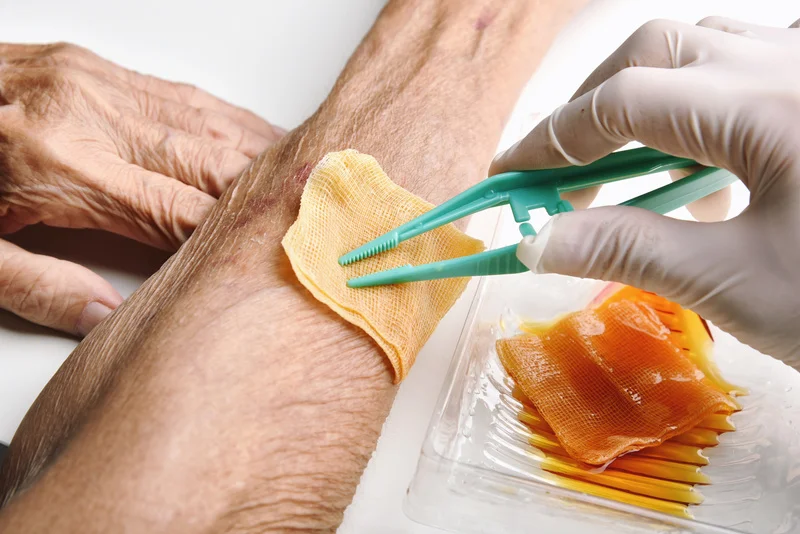If your doctor has mentioned placing an IVC filter, you may feel a bit unsure about what this involves. After all, it’s not every day that someone brings up inserting a small device into your largest vein.
An IVC filter, short for “inferior vena cava filter,” is a tiny, cage-like structure placed inside the inferior vena cava. This large vein is responsible for carrying blood from the lower half of your body back to your heart. The filter’s job is essentially to act as a safety net, catching blood clots that might form in your legs and preventing them from drifting into your lungs. By doing so, it can help avert a life-threatening condition known as a pulmonary embolism.

For many patients, this option comes into play if taking anticoagulant medications (commonly called blood thinners) isn’t possible or safe. In some cases, people have tried blood thinners without success or run into complications with bleeding. Others may have conditions or circumstances that make them particularly prone to clots—think major surgeries, trauma, or chronic illnesses that keep them immobilized. The IVC filter is there to reduce the risk of a clot traveling north, where it can cause much more serious damage.
If you’re feeling unsure, remember that having a trusted expert on your side can ease many worries. Vascular specialists like Dr. Darryl Lim, who brings extensive experience in advanced endovascular procedures, often consider IVC filters a solid choice for certain high-risk patients.
When Your Doctor Might Recommend an IVC Filter
Every patient’s situation is unique, and your vascular specialist will weigh a number of factors before suggesting an IVC filter. For instance, if you have a history of deep vein thrombosis (DVT)—those dangerous clots that form deep in the legs—your risk of a pulmonary embolism (PE) increases. Some patients, such as those recovering from major surgery or undergoing treatment for cancer, are especially vulnerable because of how these conditions affect circulation.
If you have already experienced a pulmonary embolism, your doctor might consider an IVC filter as an extra layer of protection. Even if you’re on blood thinners, there may be times when these medications can’t be used or aren’t doing enough. For example, you might have a bleeding disorder, have recently had a surgery where bleeding is a major risk, or face an upcoming procedure during which blood thinners must be stopped. In these scenarios, the IVC filter steps in as a kind of back-up plan, offering at least some peace of mind that clots won’t easily slip through unnoticed.
Different Types of Filters for Different Needs
Not all IVC filters are designed to remain inside your body forever. Some are permanent, intended for patients who need long-term protection, while others are made to be taken out once the risk of clotting decreases. If your condition is temporary—maybe you’re healing after a serious accident or recovering from a surgery that kept you off your feet—your doctor might suggest a retrievable IVC filter. This kind of filter can be removed after you’ve regained mobility and your risk returns to a more normal level.
On the other hand, if you have ongoing factors that make clots likely over the long haul, or if you can’t ever safely take blood thinners, a permanent filter might be the way to go. Your medical team will help you understand the reasoning behind these decisions. Rest assured, it’s not something you have to figure out on your own. By taking into account your medical condition and discussing all these details, you and your doctor can reach a choice that feels right for your individual health situation.

Placement and Removal: What the Procedures Are Like
The process of placing an IVC filter is usually simpler than most people imagine. It’s typically done in a hospital setting under local anesthesia with mild sedation. After numbing a small area—often in the neck or groin—your doctor will insert a thin catheter into one of your veins (either in your groin or neck). Using X-ray imaging guidance, they’ll carefully navigate this catheter into the inferior vena cava and release the filter so it can settle into the right spot. The entire process often takes less than an hour, and many patients return home the same day.
If you have a retrievable filter, removing it later follows a similar logic. Again, your doctor will use a minimally invasive approach, guiding a special catheter to grasp and remove the filter. The idea is to take it out as soon as it’s no longer needed. Leaving it in place indefinitely can raise the chances of certain complications over time, so prompt removal—when appropriate—helps maintain your overall health.
Potential Risks and What to Watch For
Although IVC filters have been around for decades and are generally considered safe, it’s important to acknowledge that no medical intervention is risk-free. Occasionally, filters can shift from their original position, reduce blood flow, or even cause small tears in the vein’s lining. In rare instances, parts of the filter can break off, traveling elsewhere in the body and creating new problems. There’s also a chance that having a filter present might alter blood flow enough to make clot formation more likely in that area, counterintuitive as it might seem.
Infections at the insertion site are also possible, just like with any procedure that breaks the skin, and retrieving a filter later on isn’t always as straightforward as placing it. Sometimes the filter becomes embedded in the vein wall, making removal trickier. While these issues sound worrisome, remember that your doctor won’t recommend an IVC filter unless they believe the benefits outweigh the potential downsides. It’s about assessing risk and reward, and your medical team’s guidance is key here.
The Upside: Added Protection When It Matters Most
Despite these concerns, IVC filters can offer valuable peace of mind. For patients who truly cannot manage on blood thinners or who face temporary periods of high clotting risk, the filter can act like a safeguard. Catching a clot before it travels to the lungs can be life-saving. It also provides a layer of security for those in vulnerable states—such as dealing with cancer treatments that increase clot risk or recovering from traumatic injuries that limit mobility.
Knowing there’s an added defense in place can bring emotional relief, too. Instead of feeling constantly on edge, you can focus on your recovery, physical therapy, or other steps toward regaining your strength. Over time, this sense of security may help you feel more confident about getting back to your normal routine.
Keeping an Eye on Your Filter and Following Up
Regular check-ups help ensure your IVC filter stays in place and does what it’s meant to do. During these appointments, your doctor might use imaging tests—like ultrasounds or X-rays—to confirm that the filter is positioned correctly and see if it’s caught any clots. If you have a filter that can be removed later, these visits are also the time to figure out when that should happen.
Working with a specialist like Dr. Darryl Lim can make the entire process feel easier. With years of vascular experience, he takes the time to explain what’s happening and why, so you’ll feel involved and informed every step of the way.
Making the Decision Together
Deciding whether to get an IVC filter, and for how long, is something you’ll do together with your doctor. By looking at your health history, current risks, and personal preferences, you can find the best fit for your situation.
An IVC filter isn’t a cure-all, and it won’t replace other advice your doctor gives you about staying active or managing your health. But when blood thinners aren’t enough, it can be a welcome safety net. With the right help, you can make a choice that protects you now and leads toward a safer, healthier future.

















